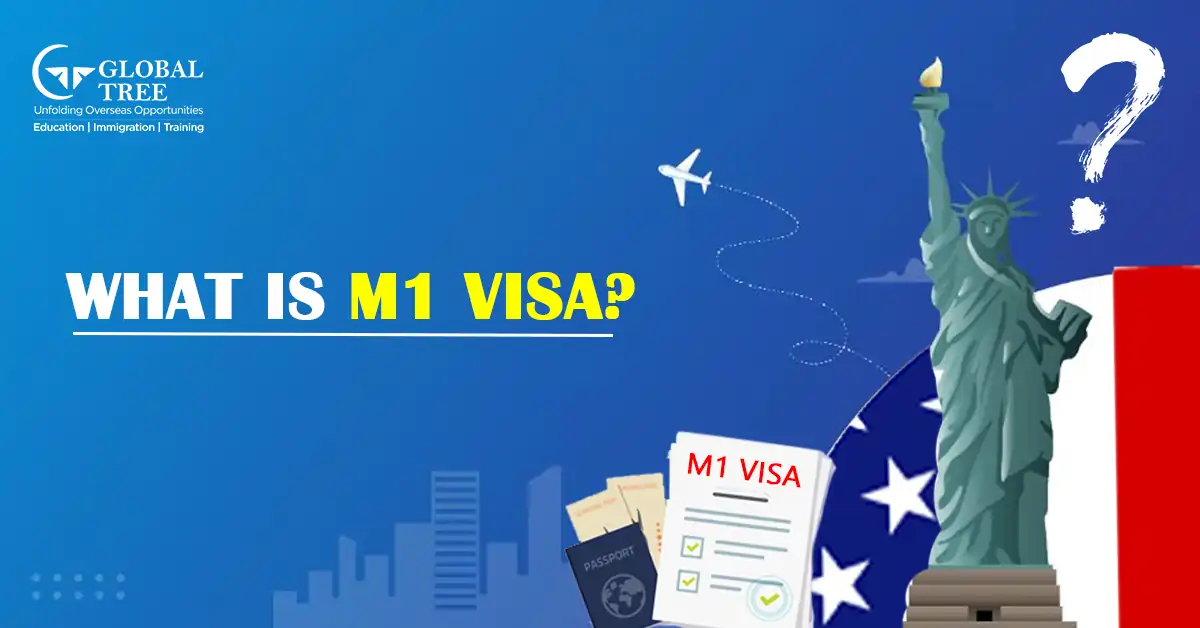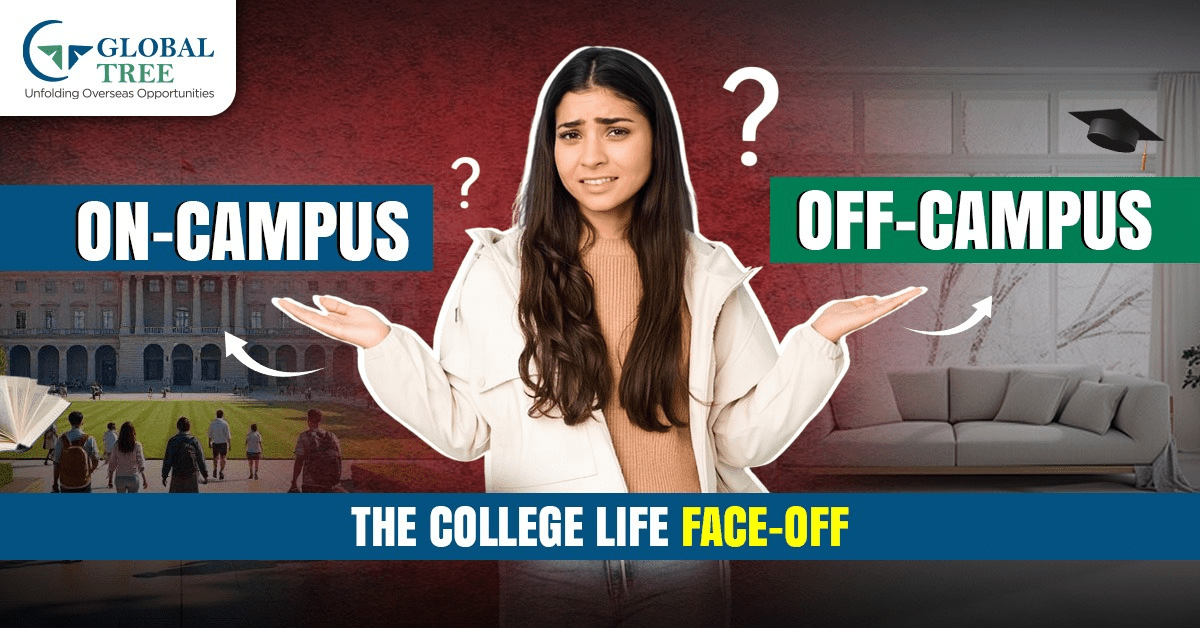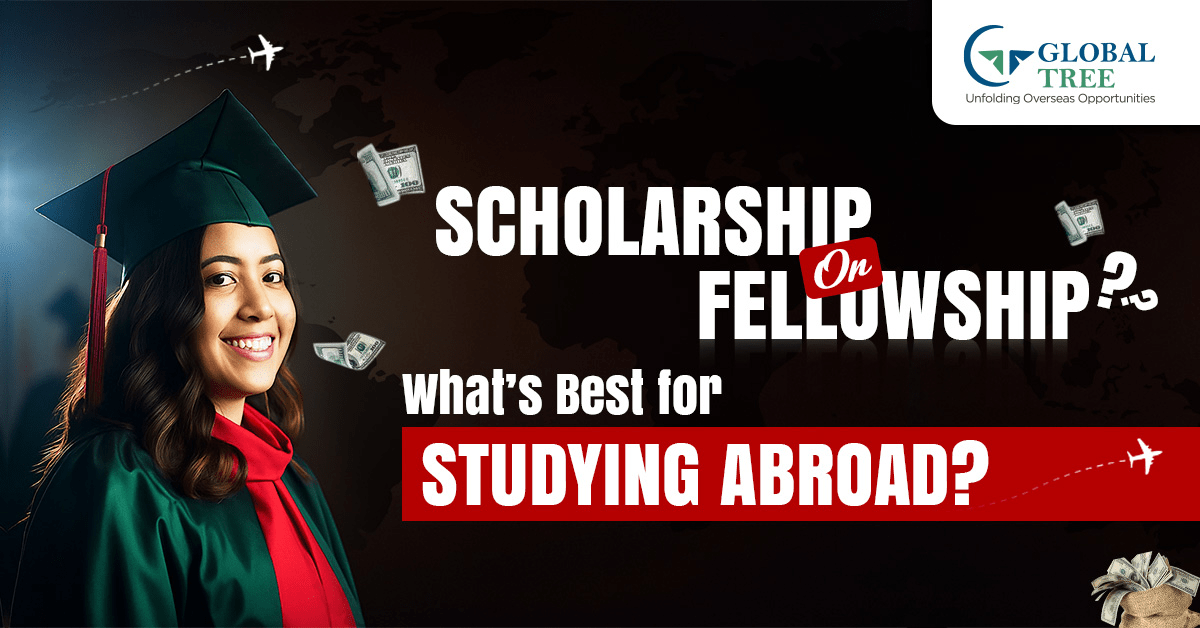All you need to Know about M1 Visa USA as an International Student

What is M1 Visa?
The M1 visa is a type of visa designed for individuals pursuing vocational or non-academic studies in the United States. Generally, this M1 visa means that the holders of this visa are generally not permitted to engage in employment during their M1 visa tenure. Additionally, individuals applying for this visa category are required to demonstrate that they possess enough financial resources to cover both living expenses and tuition costs for the entire duration of their program.
Are you Eligible for an M1 visa USA?
To be eligible for an M-1 visa application, you must meet these specific prerequisites:
1. Enroll as a full-time student in a vocational or non-academic program.
2. Demonstrate proficiency in English or enroll in English-language courses.
3. Have sufficient financial means to support yourself throughout your stay.
4. Maintain a residence outside the United States.
5. Enroll in a program that has received approval from the Student and Exchange Visitors Program (SEVP).
It's essential to note that you must first gain admission to a vocational or non-academic program before proceeding with the M-1 visa application process, which we will discuss further in the next section.
Pros and Cons of M1 Visa
Advantages
- The ability to enter and study in the U.S. as a full-time vocational student.
- Legal authorization for part-time on-campus work, with the possibility of off-campus work when approved by the USCIS.
- The freedom to travel in and out of the U.S. as long as your visa remains valid.
- The option for your dependents to reside with you, provided you maintain your M-1 visa status.
- Swift issuance of M-1 visas for eligible applicants.
Disadvantages
Here are the key disadvantages of the M-1 Visa in a concise format:
1. Limited work options, with no Optional Practical Training or OPT.
2. Short visa duration.
3. Dependents have limited benefits.
4. Strict compliance required.
5. Limited program eligibility.
6. No direct path to permanent residency.
Employment Opportunities with an M-1 Visa
Under the M-1 visa, employment opportunities are limited. Here is a pointwise summary of the key employment regulations and opportunities:
| Employment Opportunity | Description |
|---|---|
|
Off-Campus Employment |
Generally not allowed during the course of study. |
|
On-Campus Employment |
Limited to 20 hours per week during classes and up to 40 hours per week during breaks, with good academic standing. |
|
Curricular Practical Training (CPT) |
May be available if integral to the program but requires DSO authorization for off-campus work. |
|
Optional Practical Training (OPT) |
Typically, It’s not available to M-1 visa holders after graduation, unlike F-1 visa holders who can apply for up to 12 months of OPT. |
|
Severe Restrictions |
Unauthorized employment can lead to deportation and visa denials. Strict adherence to regulations is essential. |
|
Practical Training |
Some vocational programs may include practical training as part of the curriculum to provide hands-on experience. |
|
Job Placement |
M-1 visa holders are primarily in the U.S. for vocational training rather than employment purposes. Compliance with visa regulations is crucial. |
What are your Requirements for a US M1 Visa Application?
To be eligible for an M-1 student visa, you must demonstrate that:
- You have completed the required coursework.
- You've been accepted by a USCIS-approved vocational institution and received Form I-20M-N.
- You have met the minimum eligibility criteria for English language proficiency standards of a US University.
- You are financially capable to cover the expenses of your first year of study and have access to funds for subsequent years.
- You maintain a permanent residence in your home country without any intent to abandon it.
- You plan to leave the U.S. after completing your studies.
- Your U.S. education is beneficial for your home country, motivating your return upon program completion.
Other Requirements Regarding Pre-Coursework Education
1. The selected program must have a clear purpose, and applicants must enroll in a comprehensive course of study.
2. Typically, this involves attending a junior or community college with a minimum of 12 quarter or semester hours. The institution should either charge full tuition fees for students taking at least 12 quarter/semester hours or consider them as full-time students.
3. Exceptions may apply for programs with shorter durations or those offered by post-secondary vocational or business schools that confer associate or similar degrees, making them eligible for the M-1 visa.
4. In cases where a school can demonstrate that its credits have been accepted by at least three higher education institutions, it may qualify for the M-1 visa. Alternatively, the program should be non-academic or vocational, endorsed by a Designated School Official (DSO), and entail a minimum of 18 weekly credit hours (or 22 clock hours per week if conducted at a workplace).
How to apply for a M1 Visa? The Latest Application Process
Here's a general breakdown of the application process:
1. After successfully enrolling in a program approved by the Student and Exchange Visitor Program (SEVP), your details will be entered into the Student and Exchange Visitor Information System (SEVIS). At this point, you'll be required to make the SEVIS I-901 fee payment.
2. Once your registration with SEVIS is complete, you will receive Form I-20, also known as the "Certificate of Eligibility for Nonimmigrant Student Status". This document is essential and should be brought with you to your visa interview.
3. With these initial steps completed, you can proceed to apply for an M-1 visa at the nearest U.S. Embassy or consulate in your area.
Certainly, here's a more concise and rephrased explanation of the application process:
Application Submission
The M-1 visa application process can vary depending on the specific U.S. Embassy or consulate you're dealing with. It's crucial to visit your local U.S. Embassy or consulate's website for precise instructions.
First, you'll need to complete Form DS-160, also known as the "Online Nonimmigrant Visa Application." This form will require you to upload a photo that meets the State Department's requirements. After filling out the form, make sure to print the confirmation page as you'll need it for your visa interview.
Unlike an F1 Visa, even if you are under 13 or over 80 years old, you'll still need to schedule a visa interview at a U.S. Embassy or consulate in your country of residence. Although it's possible to apply in a different country, doing so may result in a more extended application process.
While Preparing for the Interview: What Documents are needed?
Here's the document checklist and requirements:
- Before the Interview
Before your visa interview, you may be required to pay a $160 application fee, depending on the embassy's policies. Additionally, ensure you gather the following essential materials:
1. Form I-20, signed by both you and an official from your study program. Your spouse and any dependents should also have their Form I-20.
2. A passport with a validity of at least 6 months beyond your intended entry date. Each family member listed on the passport must submit their visa application.
3. The confirmation page for Form DS-160. If you couldn't upload your photo while completing Form DS-160, make sure to bring a suitable photo.
4. Proof of payment for the application fee, if applicable.
- Additional Documentation
You may also be asked to provide additional documents, including proof of your academic qualifications. For this purpose, it's important to have the following:
1. Standardized test scores required by the U.S. vocational program.
2. Degrees, diplomas, transcripts, or certificates from your previous educational institutions.
3. Documentation demonstrating your financial capability to cover education expenses, travel, and living costs.
4. Evidence indicating your intention to leave the United States upon completion of your program.
Visa Interview
During your visa interview, a consular officer will ask questions to assess your eligibility for the M-1 student visa based on the eligibility requirements. Digital fingerprinting may be conducted at some embassies, but not all. If your visa application is approved, you may be required to pay an issuance fee, depending on your location.
In certain cases, additional administrative processing might be necessary. If this applies to your situation, the officer will inform you, and you may need to make arrangements for the return of your belongings.
[Learn: How to Rock Your Self Introducation at an Interview]
Entry into the United States
Upon arriving in the United States, you must have your M-1 visa, passport, and Form I-20 with you. It's important to understand that having a visa does not guarantee entry into the country. The final decision rests with the U.S. Customs and Border Protection (CBP) agent. If granted entry, the agent will either stamp your passport or issue a Form I-94, also known as an Arrival/Departure Record.
FAQs - Frequently Asked Questions for M1 visas
1. Can M1 visa change to H1B?
It is possible to switch to another non-immigrant visa, such as the H-1B or the O1 visa, while holding an M1 visa. You cannot enter the United States with the intention of changing your status to an immigrant visa (Green Card) because the M1 visa is only valid for one purpose.
2. What is the success rate of M1 Visa?
The overall acceptance rate is around 80%.14,660 applications resulted in the issuance of 11,058 M-1 visas.
3. What is J-1 vs M1 Visa?
As long as the sponsor of the exchange visitor program grants authorization, J-1 student status permits identical employment to that permitted by the F1 visa, subject to the same conditions. A student who plans to enroll in a nonacademic or vocational institution is granted an M1 visa.
4. How long can I stay in the U.S. on an M1 visa?
M1 visa holders can stay in the U.S. for the duration of their vocational program plus a 30-day grace period. The maximum stay is typically up to 1 year but may be extended under certain conditions. Extension requests must be filed before the current visa expires.
5. Can M1 visa holders work in the U.S.?
No, M1 visa holders are generally not permitted to work during their stay in the U.S. However, they may apply for limited practical training only after completing their studies, and it must be directly related to their field. Unauthorized employment may result in visa revocation.
6. Can I bring dependents on an M1 visa?
Yes, M1 visa holders can bring their spouse and children under the M2 visa category. M2 dependents are not allowed to work, and children may attend school. M2 status remains valid only as long as the M1 visa holder maintains legal status.
7. Can M1 visa holders apply for a Green Card?
M1 visas are non-immigrant, intent-specific visas and are not designed as a direct pathway to a Green Card. Any change to immigrant status (e.g., employment- or family-based Green Card) must follow strict legal channels and may be scrutinized. Attempting a status change too early may lead to denial.
8. What documents are required for an M1 visa application?
Applicants need Form I-20 issued by a SEVP-approved vocational school, proof of financial stability, valid passport, DS-160 confirmation, and visa fee receipt. Additional documents may include academic transcripts, SEVIS fee receipt, and proof of ties to the home country. An interview at a U.S. Embassy or Consulate is also required.
9. What is the difference between F1 and M1 visas?
F1 visas are issued for academic studies at universities or colleges, while M1 visas are for vocational or non-academic training. F1 students have more flexibility in terms of work and duration. M1 programs are typically shorter and more restricted.
10. Can I transfer schools while on an M1 visa?
No, M1 visa holders cannot transfer to another institution after arriving in the U.S. They must continue their studies at the school listed on their I-20. Any change requires returning home and applying for a new visa.









